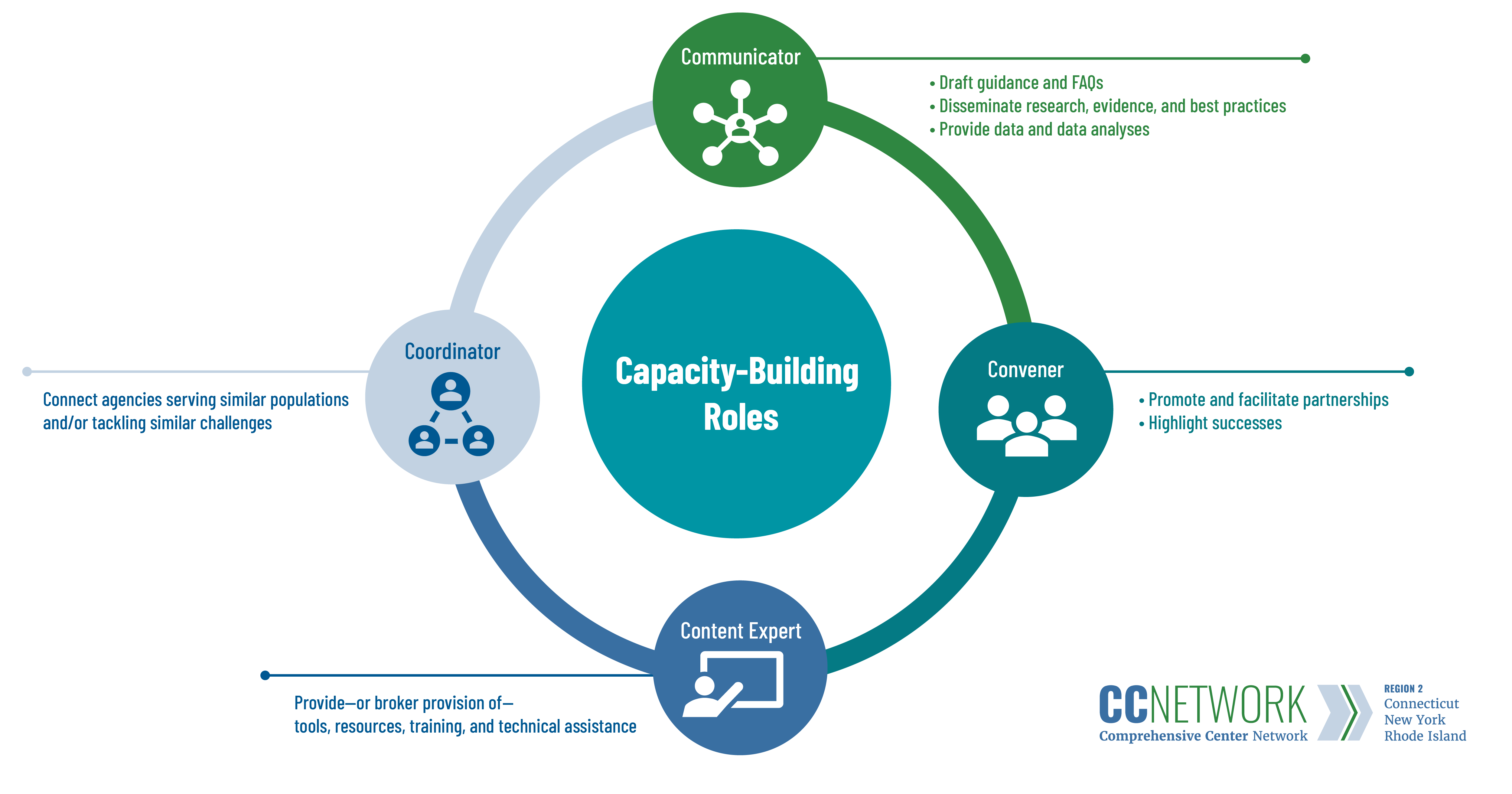How States Are Building District Capacity to Overcome Teacher Shortages (Part III)
Posted on

In the final post of this series, we explore how state education agencies in Arizona, California, Nevada, and Utah are increasing the ability of their school districts to recruit and retain teachers, particularly teachers of color and those in rural areas.
Over this past summer, we have presented four distinct ways in which state education agencies (SEAs) are opting to help their school districts alleviate critical teacher shortages. WestEd’s Senior Program Associate Caitlin Beatson coined the 4Cs—a construct that represents four ways that SEAs, in partnership with Regional Comprehensive Centers 2 and 15, are conceptualizing how to approach this work.
We first looked at examples of states serving in the following roles:
- Convenors of Groups of Districts With Common Needs
- Communicators of Mission-Critical Data
- Content Experts
Now, we turn to the fourth and final 4Cs category: SEAs serving as Coordinators Across Fields or Jurisdictions.

Coordinators Across Fields or Jurisdictions
Through a regional Rural Community of Practice, Arizona and Nevada are sharing recruitment, retention, mentoring, and induction strategies. Leaders from SEAs and rural local education agencies (LEAs) in four Western states—Arizona, California, Nevada, and Utah—gather online monthly in a professional learning community guided by the Region 15 Comprehensive Center. The participants share the challenges they face as well as the unique assets of rural school districts. Together, they construct solutions rooted in research and evidence to address systemic issues like teacher shortages, drawing at times from expert speakers who report on national and regional trends.
During a recent community meeting, for example, Arizona and Nevada leaders realized that their SEAs were doing similar teacher shortage work, although at different stages. Each state was creating pieces that the other needed: Arizona was working on a mentoring and induction toolkit for LEAs, and Nevada was working on retention and recruitment strategies. The three simple words that followed—“Let’s work together”—could reap enormous efficiencies and gains for schools going forward in both states. Learn more about the Rural Community of Practice in Bringing Rural Education Leaders Together in a High-Impact Community of Practice.
California’s cross-agency effort: Helping more people become well prepared to teach through affordable means. In recent years, California has invested over $1 billion to recruit a fully prepared educator workforce, particularly through grants to teacher candidates and to LEAs to support residency programs. The Region 15 Comprehensive Center is helping to facilitate California’s new State Educator Workforce Collaborative, which is coordinating the California Commission on Teacher Credentialing, the State Board of Education, the Student Aid Commission, the Department of Education, and public and private higher education institutions to effectively implement these investments to support prospective teachers.
The broader goal of this effort is to help prospective teachers—particularly teachers of color and teachers of early childhood and multilanguage learners—find and access clinically rich and high-quality teacher preparation programs that are also affordable. Meaningful, sustainable teacher preparation programs like teacher residencies and apprenticeships involve significant time doing experiential learning in clinical practice, which, for most, can require financial support to be feasible. Collaborative members have welcomed this effort, which quickly revealed a need for clear information for candidates about preparation pathways and accompanying financial support.
The Collaborative is working to develop a financial aid playbook as a first step in supporting prospective teacher candidates, district staff, and higher education staff and faculty in accessing and offering financial packages that provide a sustainable living wage to candidates. The creation of the playbook and continued convening of state and education partners is expected to surface additional obstacles and yield gains far into the future as the state seeks to overcome other multisector policy challenges.
For additional state–comprehensive center partnership efforts to tackle the teacher shortage, visit the National Comprehensive Center’s Educator Workforce web page.
The Regions 2 and 15 Comprehensive Centers work with SEAs and their regional and local constituents in Arizona, California, Connecticut, Nevada, New York, Rhode Island, and Utah to improve outcomes for all children and better serve communities through capacity-building technical assistance, content expertise, and other services.
The contents of this blog post were developed under a grant from the Department of Education. However, the contents do not necessarily represent the policy of the Department of Education, and you should not assume endorsement by the federal government.
